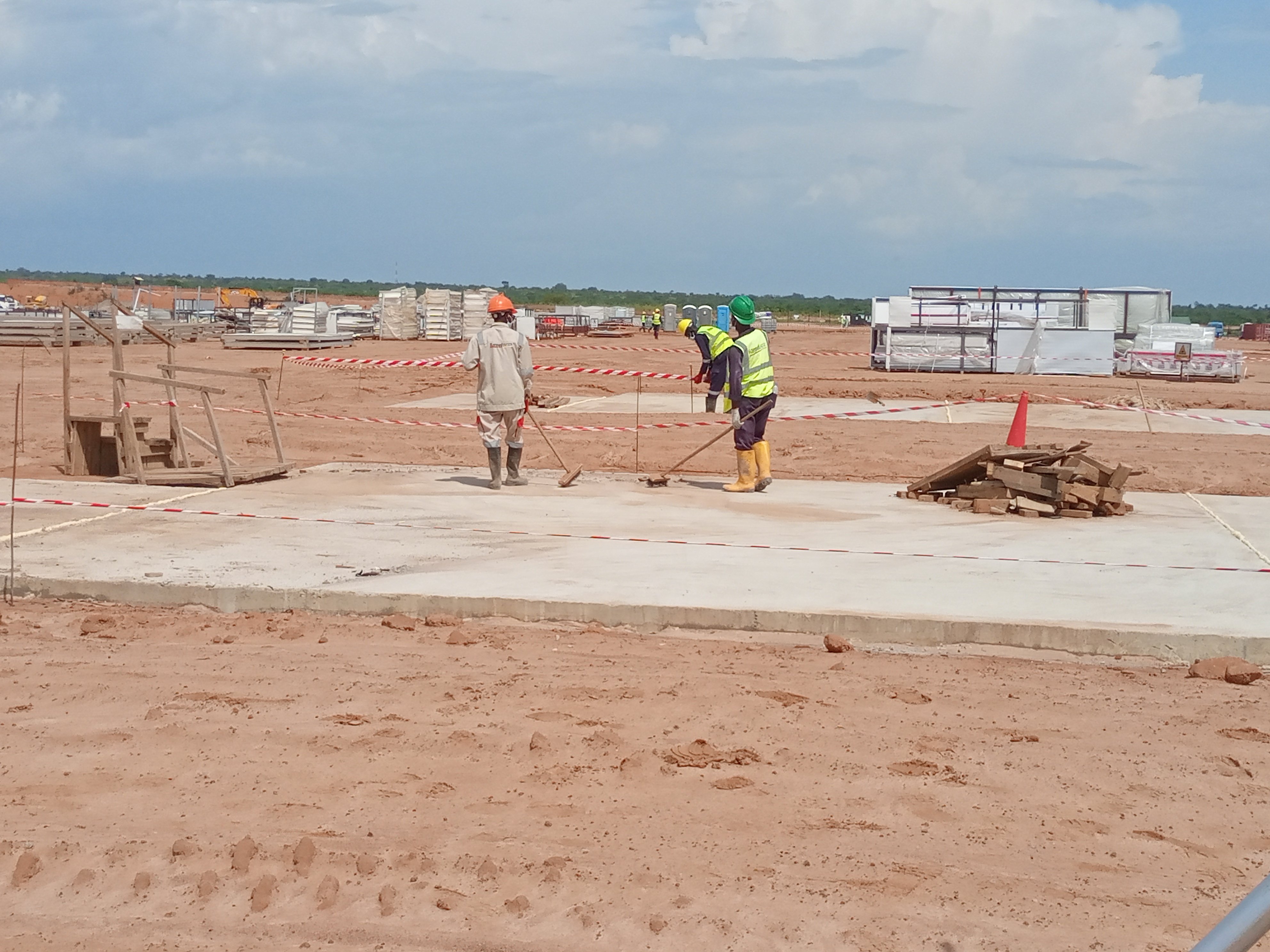Prime
Oil processing facility to be completed by end of year

Workers at a section of the Tilenga Industrial Park where the Central Processing Facility will be constructed in Kasenyi, Buliisa district. PHOTO | ALEX TUMUHIMBISe
What you need to know:
- The central processing facility will be the centre of purification of crude oil, separating it from other fluids and unwanted solid materials.
In Kasenyi village, Ngwedo subcounty of Buliisa district is a place that has been chosen to anchor a central processing facility, a key organ in the long awaited oil production scheduled for 2025.
The facility, which is under construction, will be hosted on a 700-acre piece of land.
It will be the centre of purification of crude oil, separating it from other fluids and unwanted solid materials before it is pumped to the distribution terminal from where it will be directed to the East African Crude Oil pipeline for export or to a refinery at Kabale in Hoima District.
The central processing facility is under the Tilenga project operated by Total Energies EP licensed for areas 1 and 2 in both Buliisa and Nwoya districts.
The facility is part of the upstream process that transforms crude oil or raw natural gas after it exits production wells. It separates oil from gas, water, sand, solvents or additives.
TotalEnergies EP contracted the McDermott and Sinopec consortium to carry out construction works and other allied facilities at Kasenyi. At the site in Kesenyi, the presence of heavy earth moving equipment such as graders, excavators, vibro rollers, sino-truckers and workers, tells the whole story.
Edrisa Kwizera, the Tilenga project national head, during a media tour recently told journalists, work on the project, which started in June last year, is expected to be completed mid this year.
The earthworks were contracted by Mota-Engil which has already completed clearing a portion where the camp site is being erected.
“This is the largest construction site, which will accommodate about 4,000 workers. The Tilenga Industrial Park will accommodate the central processing facility, operations support base, drilling base liquid mud plant and other allied facilities. We shall also have the operator support base, which will be a permanent installation where about 300 workers will be living as they operate the facility for [more than] 25 years,” Kwizera says.
Government signed final investment decisions with different partners in developing the oil industry, setting 2025 as the year when first oil is expected.
However, Kwizera says the central processing facility will be delivered before 2025.
“It is a massive piece of work, which was started by Mota-Engil in June 2021 and it is expected to be completed this year. We are on schedule to deliver this project to meet the first oil deadline,’’ he says.
A number of projects that seek to support first oil are ongoing in the Albertine Graben region.
Gloria Sebikari, the Uganda Petroleum Authority manager, corporate affairs and public relations, says the central processing facility is a key component of the oil production chain.
“There are fields in the North of Lake Albert. Oil will be drilled and transported through what we call inflow lines to the facility. It will be taken to the central processing facility from where it will be pumped up across the Albertine rift valley to Kabale where there will be a distribution point from where some oil will go to the refinery and pipeline,” she says.
Ugandans have for long waited to see progress in the oil sector. According to Ministry of Energy spokesperson Solomon Muyita, the speed at which key Tilenga projects is moving brings new hope and prospects of the country joining the oil producers league.
“In February, government and oil companies signed the final investment decisions to invest over $10b in developing the oil resource. The Tilenga site is being developed and activities are going on accordingly and like we shall be able to produce oil by 2025,” he says.
Environmental concerns
The Tilenga project displaced about 622 people and according to Total Energies, these were compensated.
However, the project is surrounded by local residences who have recently complained of dust and sound pollution.
In February 2022, affected residents within the vicinity of the project petitioned the Ministry of Health, seeking action against rising dust levels and air pollution.
In their petition, the affected residents claimed that the dust was contaminating their food and water source points.
“The purpose of this petition is to call for your immediate action to stop such dangerous dust endangering our lives and compensate the victims,” the petition reads in part.
However, the Petroleum Authority of Uganda attributed the high levels of dust to strong winds, which was worsened by a “prolonged dry spell within Buliisa District and the surrounding areas”.
“This is not only affecting the Tilenga Project Industrial site area but a wider landscape within Buliisa District. To deal with this challenge, the frequency of water spraying has been increased to suppress the dust generated,’’ a response to the petition from of Petroleum Authority of Uganda reads in part.
The project, Kwizera says, is being implemented with respect to the terms set within the environment and social impact assessment and notes that because this is a massive project, every time you deal with heavy moving earth equipment, dust is generated but a number of measures have been put in place to suppress it.
The Lake Albert development area covers Tilenga and Kingfisher upstream oil projects and the construction of the East African Crude Oil Pipeline in both Uganda and Tanzania.
The Tilenga project is operated by TotalEnergies while Kingfisher is operated by CNOOC.
The two are expected to deliver a combined production of 230,000 barrels per day at plateau.
Total holds a 56.67 percent stake compared to 28.33 percent and 15 percent for CNOOC and Uganda National Oil Company, respectively.




